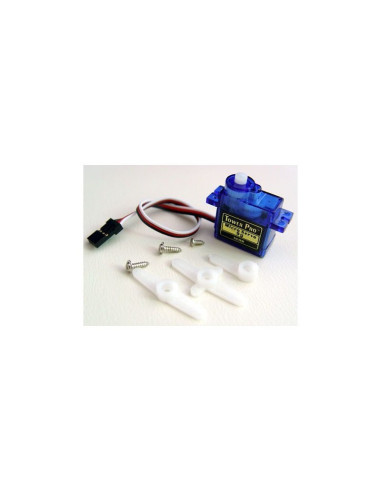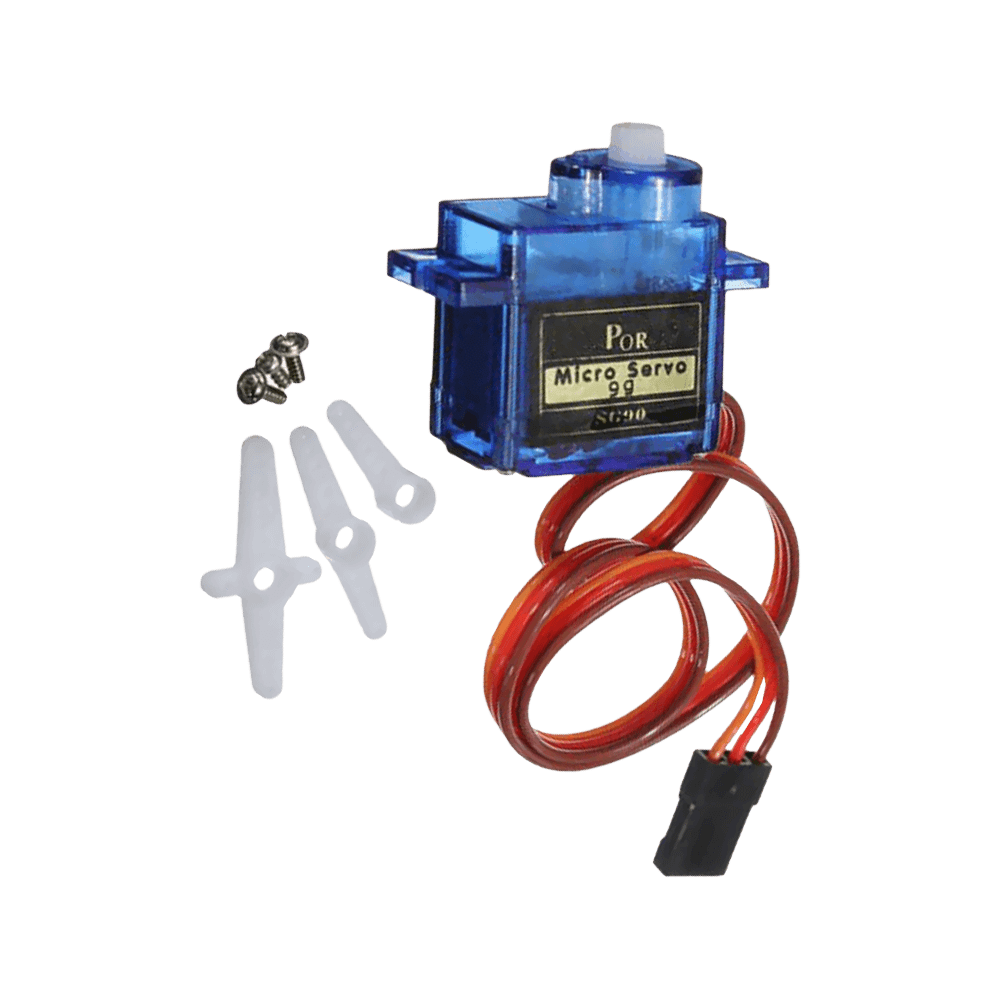


To move servo motor arm at 135 degree duty cycle will be 1.75 ms. One can easily rotate the arm at fixed angle by just varying the duty cycle. This servo, comes with three servo horns (arms) and hardware, can rotate approximately 180 (90 in each direction. This is a tiny and lightweight servo with high output power, and its metal gears (with one bearing)add better strength and reliability. Moves to 180 degree on duty cycle of 2 ms. Tower Pro’s MG90S metal gear micro servo may be the most widely used RC hobby servo today. we start the function by attaching the servo object created to pin D8 of the microcontroller, after which we center the servo, turning it to zero degrees. This tiny little 9g servo can rotate approximately 90 degrees in each direction, giving a total of 180 degrees. Tower Pro Micro Servo SG90 9g moves to 90 degree on duty cycle of 1.5 ms. With this done, we proceed to the void setup() function. Next, we create an object of the library, to be used as a reference for controlling our servo motor throughout the code.
TOWER PRO MICROSERVO CODE
We start the code for the project by including the libraries that we will use which in this case is the servo.h library.
TOWER PRO MICROSERVO DOWNLOAD
The library comes pre-installed in the Arduino IDE removing the need for us to download and install. The library makes it easy to turn the servo at different angles using a single command. The code for this project is quite easy thanks to the very comprehensive and concise servo.h library developed by the Arduino team to facilitate the use of servo motors in Arduino projects. With the connection all done, we can now proceed to write the code for the project. Servo directions are sent from the microcontroller to the servo motor as PWM pulses. The signal pin was connected to the digital pin 8 of the Arduino because it is a PWM pin. Schematicsįor emphasis, the connection is further described below. The Signal pin is the one used to feed the control signal from the microcontroller to the servo, to get the servo rotate to a particular angle.Ĭonnect the Servo to the Arduino as shown in the schematics below. Servo motors generally have three pins/wires, this includes the VCC, GND, and the Signal pin. The schematics for this project is quite simple as we will be connecting just the servo motor to the Arduino. With the connection all done, we can now proceed to write the code for the. The signal pin was connected to the digital pin 8 of the Arduino because it is a PWM pin. The TowerPro SG92R micro servo This is the latest version of the SG90, and features carbon fiber gears and control arms resulting in a massive 2. It has a torque rating of 1. The following components are required to build this project:Įach of these components can be bought via the link attached to them. VCC (Red wire) - 5V SIG (yellow/orange) - D8 GND (Black/Brown) - GND. The SG90 has a 9-gram weight and a size of 22.8 x 11.8 x 22.7 mm, making it small enough to be used in compact and lightweight robotic designs. Since we will be using just one servo in this tutorial its fine to power it with an Arduino. Servo’s have high current requirement so when using more than one servo motor with the Arduino, it is important to connect their power connections to an external power supply as the Arduino may not be able to source the current needed for the servo. which lead me nowhere.For this tutorial, we will be using the popular SG90 servo motor and our goal will be to rotate the servo motor from one end to the other. In my case, I use either a stranded wire or cut female. After that, solder your desired wires to the two pins/terminals of your the small motor. Make sure you dont remove the potentiometer and remove only the wire connections. So i started searching for information about the SG90. You now have to cut and remove the small pcb on the other layer of your servo. i have multiple servo's and every one off them works as it should except for the 4 Tower pro's So my feeling says that the problem lays with the servo. Hooked up an different servo (other brand) no problems whatsoever.

so i loaded "Servo knob" from the sketches included with the Arduino program. the servo sometimes starts sweeping (goes to 180 degrees than goes to 0 degrees and repeats this process) randomly.Īt first i thought that is was a fault in my program. While i was testing the robotic gripper some strange things occurred. theyve cheapened out and now the RaceStar ones are a way better choice now as of. to open en close the gripper a Tower pro SG90 micro Servo is used. The fake Tower Pro MG90S servos from BG used to be really good, however.


 0 kommentar(er)
0 kommentar(er)
